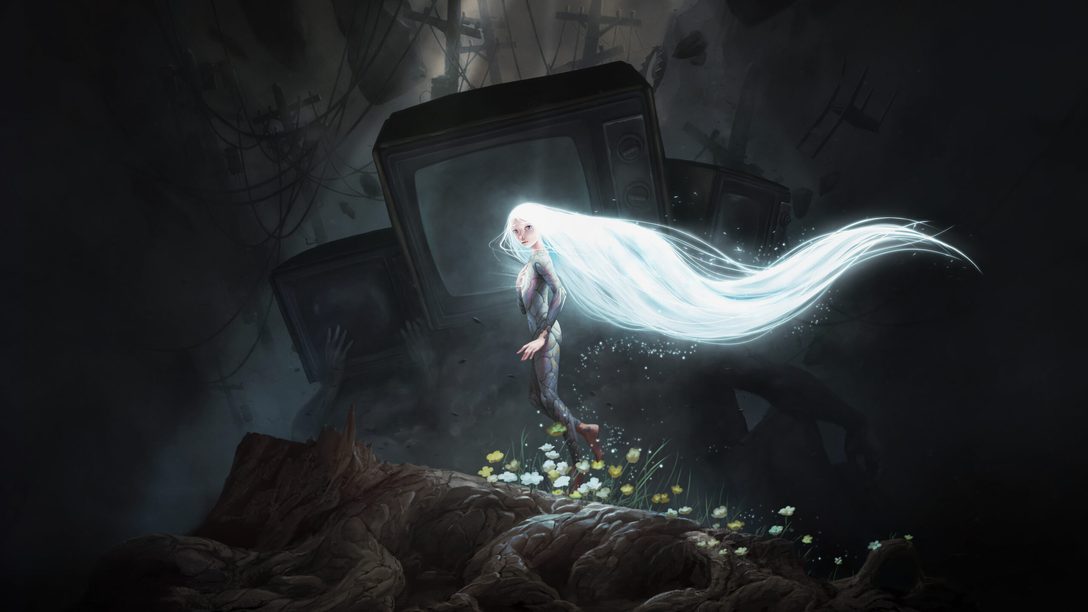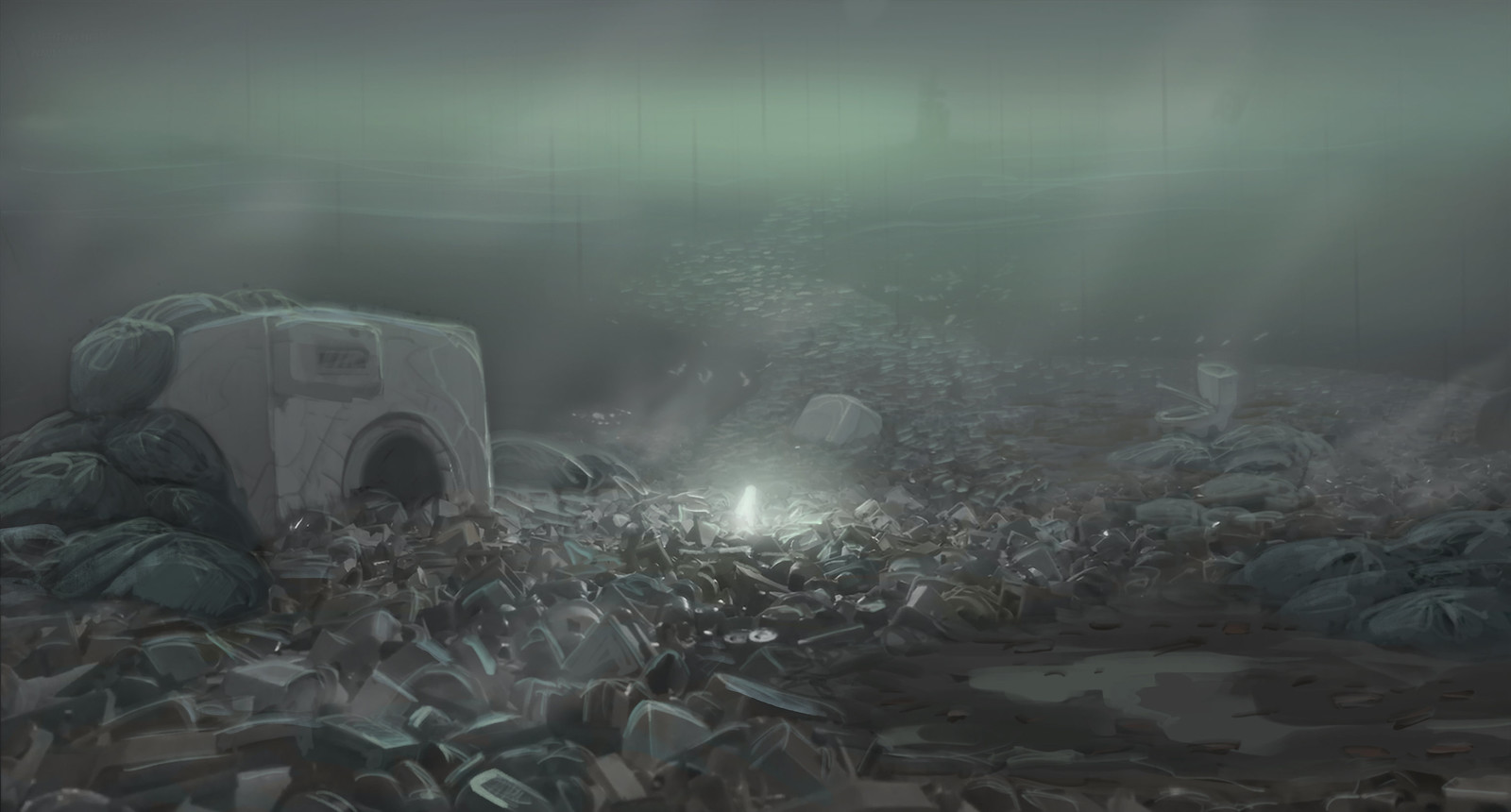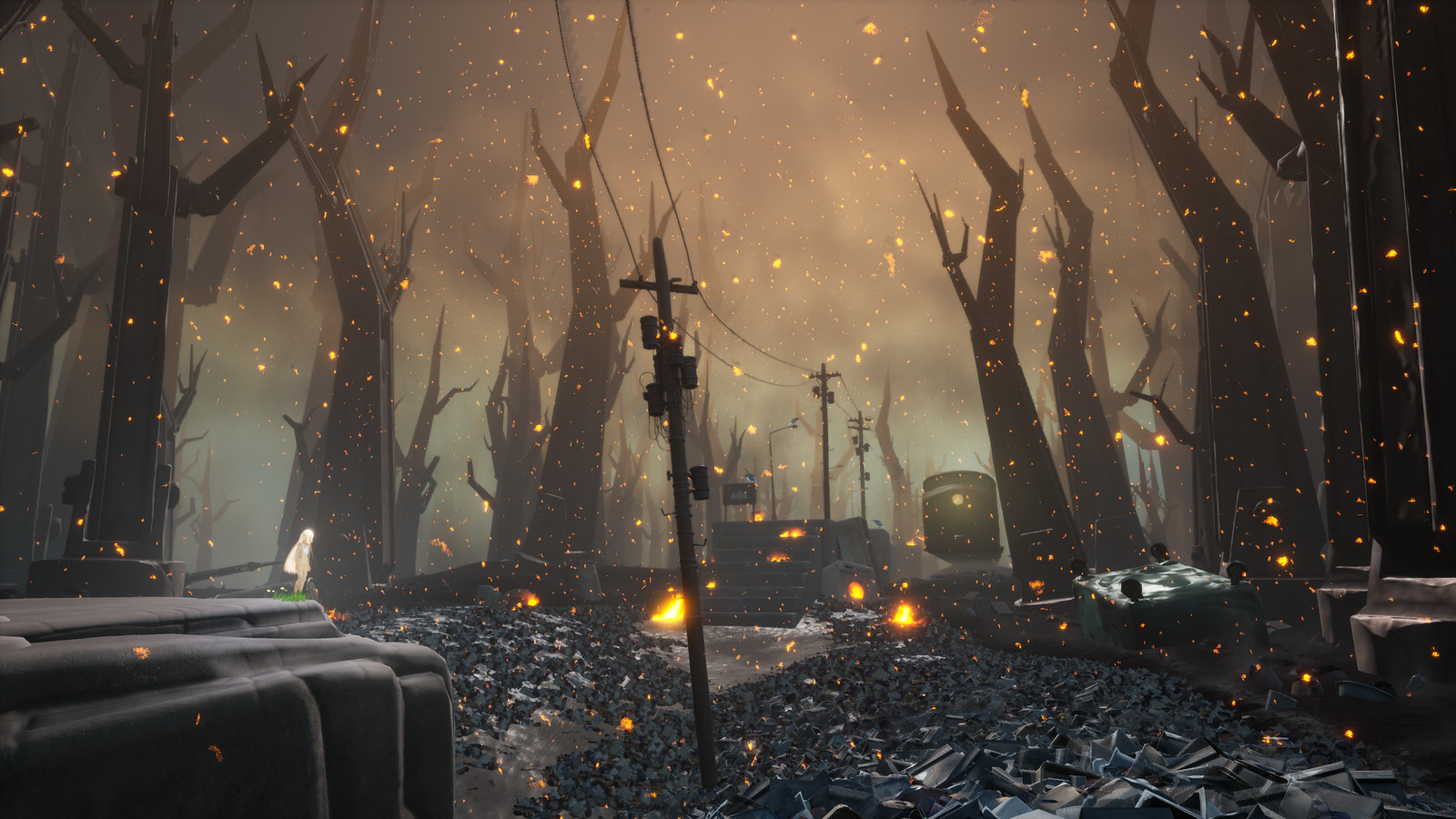
How Piccolo Studio creates organic experiences in an inorganic setting.
Here at Piccolo Studio, we like to say that we “craft” games rather than “make” them. Our logo features a needle and a thread, symbolizing this very approach.
With After Us, our next project releasing on May 23, we tell the story of Gaia, a small nymph brought to explore the outside world for the first time. The universe is a surrealistic version of Earth in the far future, after humans have expunged all life on it. It is a strange, oneiric, but ultimately captivating world where everyday objects float around, some small, others massive, and where a coat of hazardous oil taints the land.

This third person adventure mixes platforming, puzzles, and combat in a nonconventional way. The world is rich, divided into 10 different biomes. “Some parts of the game rely more on puzzles, some on exploration, others on combat, and often we switch up the traversal sections so it stays fresh”, says game co-director Jordi Ministral.
An organic approach to platforming
We invest a lot of time into creating singular experiences. How do we do it? We start with a vision, a holistic idea of how we want the player to feel. Then we take the rules of a specific genre, and we twist them. At its core, After Us is a 3D platformer. Yet, we intended to have many features often avoided when developing a platformer: a camera that is far from the main character, a lush world filled with assets artistically scattered around, and an absence of strict metrics. A designer’s nightmare, right? But we found solutions that worked wonderfully to create the organic experience we envisioned.

In complement, Gaia’s movements are simple to execute. They can be effortlessly chained in a pleasant flow. She dashes at very high speeds – about 70 km/h – so the scale of the world ended up being huge! “Players burn through content so fast that we ended up with more than 100kms of environment!”, explains Jordi. There is a lot of verticality as well. The main character can double jump very high, with an adequate balance between airborne agility and weight. Combined with gliding, controlling falls becomes easy. These motion mechanics have been designed precisely to traverse an organic world without strict metrics.

The innovative capabilities of the PlayStation 5’s DualSense controller also add another layer to this aesthetic experience – through the sense of touch. Greeting and petting animals will be possible by sweeping the touchpad, and its triggers will offer resistance as well as vibration when performing Gaia’s Burst of Life! Light under the touchpad will also reflect your life bar, displaying a green color when you are at full health and turning red as you lose vitality.

Choices that yield aesthetic opportunities
Because of our design approach, environment artists had a significant role and freedom to craft the world: there is debris and garbage everywhere, floating objects and cables running all around… Things you would typically avoid in a 3D platformer. To make things even more challenging, the dynamic camera system often frames the world from far away to emphasize the contrast of a tiny character in an epic environment.

“Games rarely use those cameras because handling collisions is hell. But we decided to embrace this decision as it gives the game a distinct personality”, notes Jordi. The camera system is smart enough to get close to the main character when it matters. It allows us to emphasize the scope of the world or focus on specific areas. But we had to iterate many times over the right combination of camera collisions, dithered materials, and transitions to create a smooth, aesthetic experience.

Environmental storytelling
In a world that is so organic, without clear metric-oriented compositions that show you the path, you might think all you’re going to do is get lost. In fact, it’s quite the opposite: we use a wide range of elements to suggest the path ahead in a subtle, yet recognizable way (lighting, color, architecture, statues, props…).
Additionally, there are also full-fledged narrative and design elements. They tell stories while guiding the player. A landmark example is the thousands of statues scattered around, representing humanity. They create a path that is recognizable, without resorting to the usual solutions. But this involved dozens of iterations for every scene. We had to carefully place the assets and “compose” each section.

Finally, the game will constantly tease in the far horizon what you are going to play next and uses verticality to twist the path. At times it feels like a labyrinth and suddenly you are in a big open landscape. The game plays with contrasts all the time. And when it all comes together, the player is seized with a sense of freedom that is unusual for platformers.
After Us is out May 23 on PS5.












Comments are closed.
1 Comment
Loading More Comments